
It has taken a while for me to make my peace with magpies. For a long time, as a child, youth, and young adult, they were a creature I profoundly disliked. The reason for this was pretty simple: a magpie killed my tortoise, my only childhood pet, named Werner. So I came to regard magpies as Werner’s cruel, marauding murderers, and even as I grew up, and began to take an interest in birds and the natural world, these negative associations proved somewhat difficult to dislodge.

But I gradually grew to appreciate magpies. At least part of this appreciation arose out of a broad philosophic change I went through a few years ago, when I began to really question the human tendency toward making, expressing, and acting upon value judgments. I could see this tendency in myself very clearly when thinking about how I reacted to certain kinds of weather, or particular times of year (could a grey February day really be said to be objectively “depressing”?) or when considering a particular bird (how could it possibly be appropriate to regard a magpie as cruel or evil in human terms?). You might say that understanding my own subjective reaction to magpies was an important step in beginning to detach myself from my own tendency towards making value judgments in areas of life much more significant than birds: a process which has allowed me to regard those with whose behaviour or political positions I strongly disagree with much more empathy, as well as proving very useful in managing my personal mental health (I’ve found that learning to regard the negative feelings or value judgments humans tend to attach to all kinds of things as provisional, transitory and entirely subjective is a good starting point when countering depression – something I’ve written about much more thoroughly in Wheesht).

The other reason I found myself able to appreciate magpies is because I began to learn more about birds in general. I became much more interested in birdy habits and behaviour, I read lots of books about birds, and I enjoyed observing and listening to the different birds around me. Because I’d developed a particular interest in my local ravens, I went through quite an extensive corvid reading phase, and, as a result of this, the smartness and resourcefulness of magpies became something at which I grew to marvel. Like other birds, then, I began to appreciate the difference of magpies – their radical alterity from me as a human – and to find that difference both wonderful and weirdly comforting.
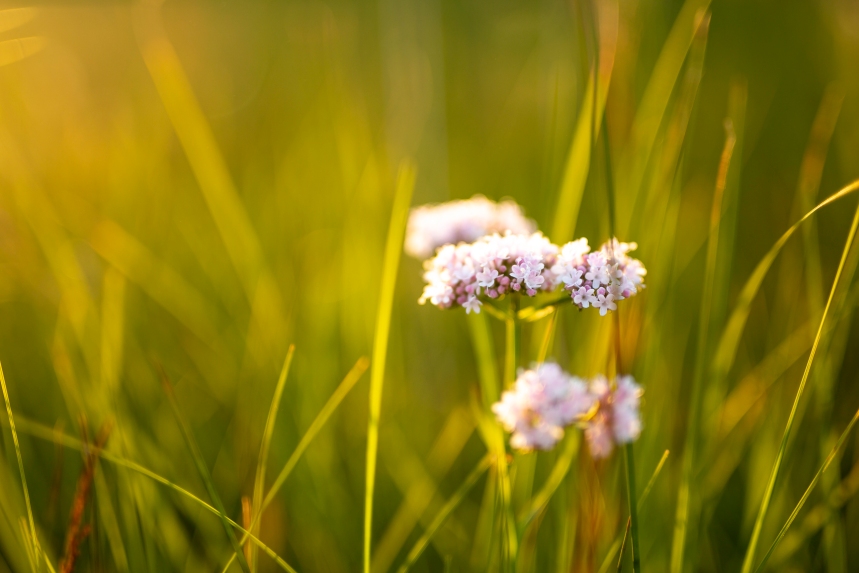
The comfort of regarding birds through the lens of their own this-ness – their radical alterity rather than the distorting lens of human sentiment – is something Richard Smyth captures brilliantly in An Indifference of Birds , a birdy book which resonated very powerfully with me. And yet, in the past couple of weeks, I’ve wondered if my magpie appreciation might be about to be tested when I’ve found myself embroiled in the ordinary birdy drama of their world.
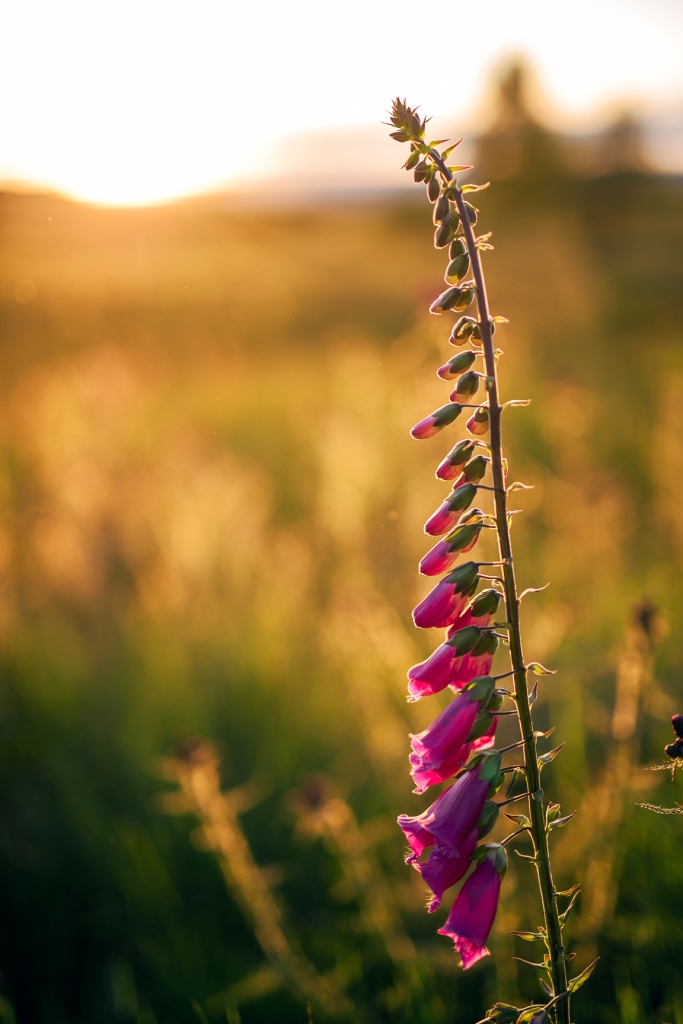
Housemartins nest beneath our eaves. Their arrival heralds spring, and Tom and I love to watch them building their beautiful nests, flitting about and chit-chattering above our heads when the weather grows warm enough for us to sit outside. We watch the housemartin pairs competing and mating, sitting on their eggs, feeding and schooling their young. But we aren’t the only watchers. By early June, the neighbourhood cats have begun to gather beneath the nests, gazing hopefully upwards, waiting for a falling fledgling, and our local magpies also regard the nesting housemartins as opportunities.
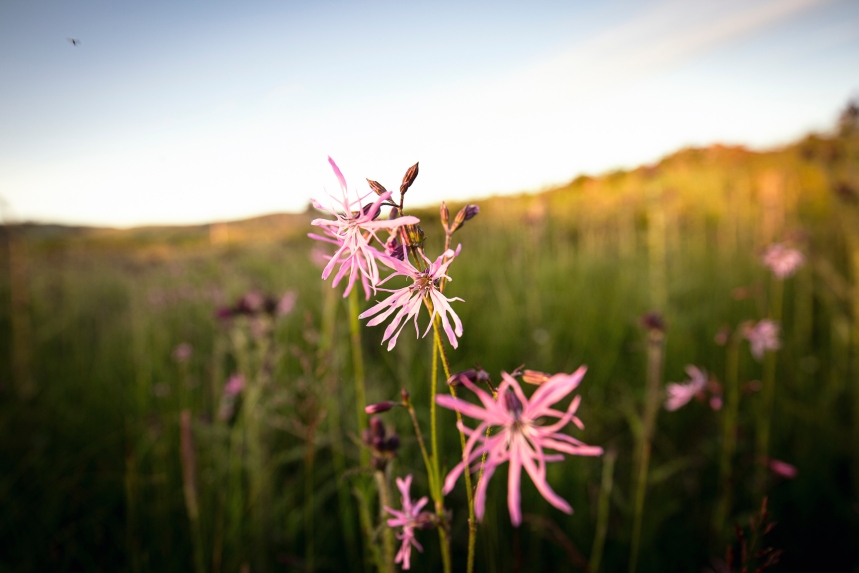
At this time of year, I tend to keep an eye on the size and aptitude of the fledglings, as well as the behaviour of the cats and magpies. About a week ago, the brood beneath our bedroom window were looking about ready to fledge, and magpies began to attack the nest. In the early hours of every morning, I found myself in the odd position of stalwart housemartin nest protector, sleeping lightly, with one ear open for a signature magpie cackle or housemartin distress call, poised to stick my head out of the velux window, and interrupt an attack. The magpies really do not like the way my head suddenly and loudly intrudes out of the sloping roof upon their birdy world and I found that simply presenting them with the sight of my emerging head served as an effective deterrent to their predatory activities. But only temporarily so. For, the day after I’d disturbed a particularly determined magpie nest attack, I got up early, went downstairs to make a cup of tea and knit, and, by the time Tom woke up a few hours later, the housemartin nest had been destroyed.
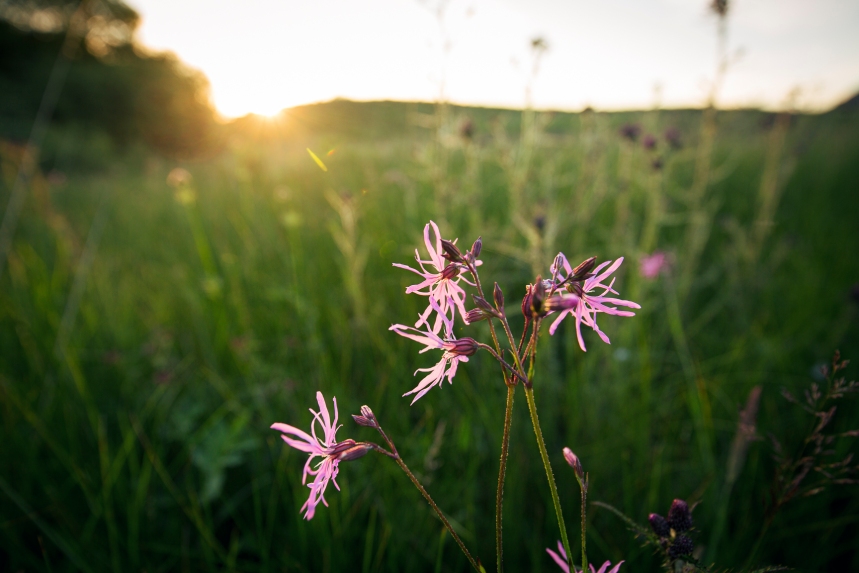
One can’t but feel for the wee housemartins under such circumstances, and I was very heartened later that day when I spotted a single fledgling perching uncertainly on the roof near where the nest had been. So at least one of the brood survived.

I examined my feelings very carefully after this incident and was interested to find that, while my strong desire to prevent the predation of the nest had cost me several nights of disturbed sleep, and while I certainly wanted to protect the fledglings, I did not regard the magpies with the slightest rancour or dislike. For they were just doing what magpies do.
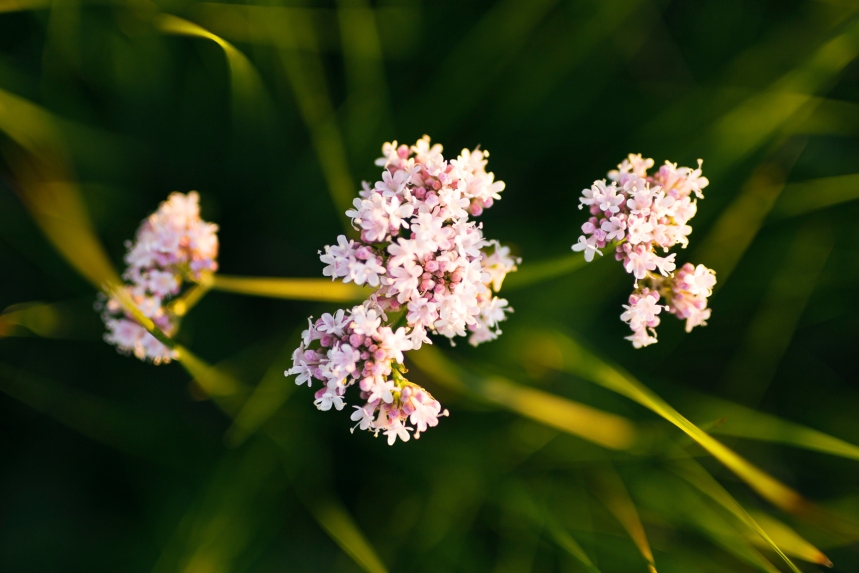
And so I realised that I’d made my peace with magpies. And I’ve found myself often thinking of late about how, in their complete exteriority to the world of human sentiment, as well as the way that they reveal the possibilities of seeing things from several perspectives simultaneously, birds have a lot teach us.

(A stonechat, and not a magpie)
Milarrochy Tweed delivery permitting, I’ll be back here on Friday to show you a new design, in our Ardnamurchan shade. And if you are interested in reading Richard Smyth’s highly-recommended An Indifference of Birds, we have a few copies remaining in the shop.



The Corvids got such a bum steer when we incorporated them into the white psyche. They have a history of unsettling us. They have a history of being repositories for undesirable traits.
But they are very clever and to see the parent (and family)crows passing on their crow-wisdom to the young is one of life’s joys.
The BOPs do not generate the same “bad” publicity that the Corvid does. Quite the reverse.
I’m an Australian and therefore have the joy that is cohabiting with the Australian magpie (not a Corvid as has been stated but a bird often hated, feared and misunderstood) for its territorial displays).
The Original Australian’s had as many words for this bird as there were dialects.
One I love is from South Australia “koorabaukoola”… A fine example of an onomatopoeic word.
I will die happy if I can do so on a chorus of the Australian Magpie’s song…
I don’t say this in jest. The magpie’s song is the one thing that (for me) can pierce dark hell.
Cheers
Karin
LikeLike
Love the comments on Australian Magpies but as a bird nerd, I have to point out that Australian Magpies are actually in the Butcherbird family and are not related to Magpies at all. Like so many Australian birds, they were named after European birds they superficially resembled but are not related to at all.
LikeLiked by 2 people
thank you!
LikeLike
That’s a very interesting point. I looked up the real “magpie” and was struck by its similarity to the butcherbird!
Just to add more confusion.
Had I been a plundering inquisitive explorer I would have named the butcherbird the magpie!
The original inhabitants had many names for this spectacular bird.
From Southern Western Australia comes “Coolbardie”
From the Deiri tongue in South Australia “koorabaukoola”
In the Aranda tongue (SA) “orrapoora”.
Many more of course!
Cheers
Karin
LikeLike
I read this post in my fatigued state yesterday morning and loved it. I’m glad I came back to read the comments, which also are fascinating.
I have limited experience with magpies as they don’t hang around particularly where I live, but I did have one frightening experience when I was much younger and completing athletic training in Australia. I was swooped by one while running on a bicycle path in a forest. I don’t think I’ve ever returned home as quickly as I did that day! Anyhow, no harm done. (We do have crows here, and whenever I think of crows I think of the painting Seven Crows by Alex Colville. I can’t find the quotation, but at an exhibition of his work I remember reading something about the knowing of crows (possibly by Anne Marie Macdonald). The image and the idea remained with me.
I was thinking this morning about the ideas expressed here about “this ness” and a parallel to humans. Obviously, the key difference is that humans (conservatives and liberals both) usually have some deep, buried belief, about either themselves or the deficiencies in others, that drives any extreme position, and that belief can change. My best friend and I talk about this a great deal. He gets incredibly frustrated with people with extreme or distasteful-to-him viewpoints, whereas I have a deep curiosity about how they got to the belief they hold. There’s always some root of pain or misunderstanding (or simply experience) and I want to find it, while listening patiently and hopefully without judgment. Growing up, the women around me were judgmental – in a trivial, gossipy way – which I instinctively loathed. It made me consciously try to reserve judgment as much as possible. That said, I fail miserably when it comes to my irritation with high income people with good accountants and their self-righteousness about their success owing to hard work (with the general belief, difficult to dissuade them from, being that people who are poor are poor because they are lazy). But I digress…
While individual beliefs can be changed, with patience and understanding, the human need to form tribes or gather in camps I am afraid cannot.
I greatly enjoy your posts about nature and thank you for them. This was a balm to my beleaguered self yesterday!
LikeLike
thank you for this thoughtful response, Stephanie. I’m with you on the deep curiosity!
LikeLike
Stunning photos as ever. Glorious light. I think of magpies as avian orcas, beautiful blue black feathers and I too have heard them warning of a cat’s presence in the garden. Completely ruins the cat’s chances of a sneaky attack!
LikeLike
I love magpies. When I was 13/14 I read Seven for a Secret by Mary Webb. My mother always recited the magpie poem whenever we saw magpies and if we only saw one the search would be on to see another! It is a link to my mother.
LikeLike
You might find this interesting , a report in today’s news on Australian Magpie song https://www.abc.net.au/news/2020-07-02/queensland-magpie-song-study-research/12389422.
LikeLike
What an interesting post. I find it easy to accept what magpies and other animals do (although I would have felt differently if they had murdered a childhood pet). I find it upsetting how emotional people get about them for killing other birds when it is man who causes much more death and destruction for small birds. What I find harder is to be more sanguine about is people who have certain political viewpoints, this is something that I am trying to get better at …… But right wing views seem profoundly immoral and selfish to me and I find it hard to accept that people who vote conservative are not necessarily immoral and selfish!
LikeLiked by 1 person
Our late lamented black & white cat Theo, was not a magpie fan. After a group tried to mob him, he plotted revenge. A few days later, my husband was in the garden and watched him climb a tall conifer to a magpie nest. He removed an egg , climbed back down with it in his mouth and placed it intact at my husband’s feet. Once he had received appropriate praise, Theo broke the egg and ate it!
LikeLiked by 3 people
Despite being swooped in by aggressive Aussie magpies I’ve always loved them in the U.K. mostly I think because of the well known rhyme that would keep me on the look out for them when I went on walks and because they are so distinctive and easy to spot. We also used to salute single magpies, though no idea why. I loved season 3 of the Detectorists and the lovely Unthanks song. Still love them, though I’d be upset if I saw them hunting out little fledglings.
LikeLike
And then again, Aussie magpies do what they do! They are amazingly smart and remember people who either great them well or poorly. There is a story of a researcher into swooping behaviour who “taught” a non-swooper to swoop him. A number of years later the bird, who in the meantime had never swooped anyone else, recognised the researcher on a return trip to the area and had a go at him! We have a family who visit us every morning; they come and bang on the window if we are not there to greet them. They have brought a couple of generations of new ones to get to know us. They are so very territorial, have very strong family bonds, and of course their warbling is the quintessential Aussie sound to wake up to in the morning (or all night in a full moon in Spring!)
LikeLiked by 1 person
My mum always says to “salute the captain” when she sees a magpie. Though why a magpie is a captain I don’t know.
LikeLike
My father used to refer to magpies as „diebische Elster“ (thieving magpie). While looking it up a minute ago I realised it’s an Italian opera from 1817 (la Gazza Ladra) and therefore probably made it into a German saying.
I also found a study from Dr Toni Shepherd (University of Exeter) that proved magpies aren’t thieves at all. (Only found a paywall article in English that seemed decent but googling it I’m sure one can find something 😉)
It’s funny since I never gave it a lot of thought, but nevertheless had a negative connotation.
Now I found out they are really intelligent birds, so thanks for ‚making‘ me look into them and changing my (subconsciously prejudiced) mind 👍😊
LikeLiked by 1 person
Thank you so much for this. What you’ve written and the incredible photographs have enriched my day. Learning about the relationships between humans (me, specifically) and other living beings is a source of fascination and spiritual nourishment for me. It was a pleasure to read this post.
LikeLiked by 1 person
Thank you so much for this. What you’ve written and the incredible photographs have enriched my day. Learning about the relationships between humans (me, specifically) and other living beings is a source of fascination and spiritual nourishment for me. It was a pleasure to read this post.
LikeLike
I so appreciate your thoughtful comments about the topic of judgement using your feelings about magpies as an example. I am aiming to move beyond judging things/people/situations as right/wrong, good/bad which I understand to be artificial, human-created concepts and not something inherent to life or existing in nature. As I realize that I can like/dislike something without making it right/wrong, I have a great deal more inner peace and my heart is happier. These days it’s not easy! But a bigger perspective always helps me. Every day, all over the world, for all of human history, “good” things and “bad” things happen, that’s human life. And in the natural world, things just happen without human values weighing them down. I too take great comfort from watching and learning from nature. Thank you so much for your honest and articulate post!
LikeLiked by 2 people
So much of how we feel about animals is cultural. In many Native American cultures, magpies are considered to be friends of humans, symbols of intelligence and creativity, and even messengers of a creator. In Haida mythology, Raven is responsible for bringing light to the world by stealing the sun from a box in the heavens. Corvids are both good to humans, but also tricksters–the key is balance, so well represented by the magpie’s colouring of black and white. I was surprised when I first came to Britain that most corvids have such a bad image. I still love them, though.
LikeLiked by 1 person
I also associate trauma with magpies, as do many Australians. They are known for being extremely aggressive during the breeding season, and will swoop pedestrians and cyclists who come too near the nests, sometimes doing real damage. In spring time, it is not uncommon to see parades of small children walking to school with ice-cream containers on their heads, with eyes drawn on the top to dissuade the magpies. Cyclists adorn their bike helmets with cable ties, sticking out at angles like thorny crowns, but nonetheless many a cyclist has come a cropper as a result of aerial bombardment. Astute pedestrians carry furled umbrellas over their shoulders. But magpies are clever creatures and will recognise their own – the best protection is too feed the ones that live near you. People often make friends with multiple generations of magpies. There are stories of magpies turning up to get plastic bags removed from their legs – and then bringing their friends for the same service. And they sing the most beautiful liquid gurgling carol.
LikeLiked by 3 people
This has so much been my experience too. I came to birdwatching and a love of nature through the interest of my young child. We learnt together and I began to properly see the non-human world. After a few years of observing and being fascinated by what I saw, I realised that my looking was remarkably absent of value judgements. Transferring this acceptance to myself and others became easier as a result, and one consequence was accepting myself well enough to start knitting me-shaped garments.
LikeLiked by 1 person
I often wake up to magpies or rooks making a racket on our roof. The magpies bounce along the flat roof dormers cackling like demented Pratchett witches but I love them still. The eye with which they assess you is full of intelligence and the colours in their wings are amazing. They are guilty of nothing worse than eagles and buzzards and we are guilty of prejudice for all sorts of reasons, some of them good, some of them not so good. As a teenager I had a love/hate relationship with my Mum’s very beautiful cat who was tiny but a demon of a hunter. I heard a great magpie racket going on outside and looked out to see Smokey the cat, on the grass watching a magpie bouncing about and cackling just out of reach in from on her. While she was distracted the other magpie sneaked up behind her and pecked her tail…getting revenge for the little birds? Perhaps defending their own nests. Whatever the reason it was profoundly funny when the cat came slinking back into the house, dignity removed. Helen Lockhart at Ripplescraft has dyed some skeins in a colour called Magpie’s wing. It is beautiful and I was looking at ALice Starmore’s Eagle collar wondering if I could adapt the idea to a Magpie wing. Alison x
LikeLiked by 3 people
Good point – we’ve just had magpies move into next door’s garden and raise a family. When I mention them my parents always remind me that they steal from other birds’ nests but when I go to their house they point out the buzzard hovering overhead quite happily. We spent an hour watching the fox cubs playing in the orchard the other evening and there was not a word about what they eat either.
LikeLike
I do so agree about being judgemental. It is a trait in myself which I recognise and deplore. In fact I only truly recognised it after my Mum’s death last year, when I started seeing and feeling her in me.
By the way, what is the very pretty pink flower in the photo just before the stonechat?
LikeLiked by 1 person
valerian – so lovely at this time of year
LikeLiked by 1 person
Beautiful! Thank you.
LikeLike
Nope, still don’t like their, or the rooks, destruction. I have found too many baby birds and destroyed eggs of the songbirds to think any other way. I think it’s the fact that they have killed and not used what they have killed. The sparrow hawks whizz through the garden and take the odd grown bird but they then don’t leave them, they use them.
LikeLike
I remember walking in our park a couple of years back and watching a mother mallard duck walking along with her little string of ducklings behind her with a magpie bringing up the rear, I’m happy to say I intervened and no ducklings were lost that day! I am all for intervening … we have cats, I have intervened many times, fledglings, mice, frogs, butterflies ( butterflies are never a good outcome). I do get so cross with them, they’re certainly not hungry they don’t need to hunt but it’s how they’re programmed and they can’t help doing what cats do …. but it’s not easy sometimes.
LikeLiked by 1 person
Very sensible attitude, birds are birds and do what birds do.
LikeLike
Another excellent, beautiful book is “What it’s like to be a Bird” by David Sibley. The writer/illustrator has rendered full-size images of North American bird species to illustrate his narrative.
LikeLiked by 1 person
As ever a very interesting and informative post. However, whilst I admire your attitude and have no problem about not making value judgements about animals and birds, there are quite a few political species around at the moment that I really struggle to empathise with!
LikeLiked by 1 person
I love magpies, although I understand your reason for not liking them. Childhood traumas like that are difficult to shake. When I was about 5, I was playing on our front sidewalk and my kitten Euphy ran out into the street and was hit by a car. She stumbled back and died at my feet. There is more to that story than a dead kitten, and it was cemented in my head for all time. Fifty years later I can still see the gold 4 door car that hit her. One comes to terms with events like that, but they still leave their mark.
We have a lot of magpies in central Alberta, yet none visit my yard. I’m not sure why, maybe they’ve seen my parrots in the window and they know that my macaw is bigger and louder. Maybe it’s the nesting ravens in the tree line between pastures. Whatever the reason, they don’t visit. Maybe one day. For now I enjoy the blue jays, grey jays, chickadees, sparrows, nuthatches, woodpeckers, and a multitude of other birds.
I even had my neighbor’s Indian Runner ducks playing in my puddles yesterday, my parrots were most amused by this, and so was I.
Mention magpies in a crowd and it turns into an angry mob, I’m always amazed (and saddened) at how much people can hate a creature.
LikeLiked by 1 person
I have watched a ramshackle coalition of magpies and jackdaws chasing off a sparrowhawk which was trying to take a small bird,(blackbird, sparrows) from our suburban garden on several occasions – they also keep a vocal neighborhood watch for cats slinking through. Esther Woolfson’s beautiful book Corvus has a memorable chapter on magpies, would highly recommend it.
LikeLiked by 2 people
I have watched on several occasions a ramshackle coalition of magpies and jackdaws chasing off a sparrowhawk which was trying to take a small bird (blackbirds, sparrows) from our suburban garden. They are very vocal about cats slinking through as well, I think of them as our neighborhood watch. Would highly recommend Esther Woolfson’s beautiful writing about birds, especially Corvus,
LikeLiked by 1 person
Thank you for articulating these thoughts about value judgements so clearly Kate. And I love the way you’ve illustrated them with photos which include some beautiful and useful (if not always to humans) plants usually only ever seen as weeds and always disparaged.
How sad to lose the house martins! I too am on red alert for their distress call, usually because of the sparrowhawk here. Like you I had a deep-seated dislike of magpies until last year, when my prejudices were challenged by a small one who sought shelter by our door whenever it was attacked by other, larger magpies, who would descend on it in a howling mob, pecking viciously. From tutting disapprovingly whenever I’d seen one before I became, in no time, the protector of this particular magpie, rushing out to fend off the ‘baddies’ and feed it cheese and soft bread because its beak was so damaged. It was an interesting reversal for me and made me question my blanket dismissal of all corvids as ugly or cruel birds. Though of course under these circumstances it was hard to do so without sentiment! The little one was routinely attacked throughout the summer until its final visit when it sat exhausted and bleeding, tail ripped out, on the back of my garden chair for a bit before flying off. I knew I wouldn’t see it again; that it couldn’t possibly make it, but still catch myself listening for the particular split-note greeting it always used as it arrived. It’s impossible not to experience such trust as a blessing, and a reminder that the birdy world does indeed have much to teach us.
Fingers crossed for your remaining house martin youngster!
LikeLiked by 3 people
Thanks Kate – an interesting and thoughtful article. It reminded me, in a roundabout way, of the non-fiction book ‘Penguin Bloom’ about an injured magpie who enters the lives of a family as they are coming to terms with injuries suffered by their mother in an accident.
LikeLike
I love our magpies, I even have one tattooed on my leg. Such clever birds and the singing is so much a part of our Aussie bush life. I do like the smart ravens too 😊
LikeLiked by 1 person
Kate, your writings about the birds and magpies are are exquisite. I live in the USA in the state of Kentucky. My favorite birds here are the Cardinals and Mockingbirds. Cardinals mate for life and I have a pair in my yard. The Mockingbirds sing their songs and songs of robins and other birds….sometimes they sing a car alarm song. I’d like to recommend a short story by Mark Twain about Bluejays. It is called WHAT STUMPED THE BLUEJAYS’. I think you will enjoy it.
LikeLiked by 1 person
thankyou, Betty – I’m off to seek out that Mark Twain story
LikeLike
http://www.eastoftheweb.com/short-stories/UBooks/WhaStu.shtml
LikeLike
I have been reading Jennifer Ackerman’s The Bird Way: A New Look at How Birds Talk, Work, Play, Parent, and Think. I like the concept behind The Indifference of Birds, and I see I can get a copy from Uniform Books directly, since you are out: https://www.colinsackett.co.uk/anindifferenceofbirds.php?x=103&y=189
I had an experience with a bird once, that has informed my respect for them as “other” ever since. I was standing in front of my tall bookcase browsing, in my apartment. Across the way, a large picture window. My back was to it. But I just had this “feeling” and I slowly turned around and there was a very, very large Cooper’s Hawk on the window sill, staring in at me intently. We stood there together for about a minute before he took off. I doubt he was looking at me particularly as prey, but I felt like it.
And so my interest began. But that association remained, and so I know a little what you mean about your magpie and your pet turtle!
I live near a woodland conservancy, named for Tregaron Scotland https://tregaron.org/ by one of its former private owners who hailed from there, and Rock Creek Park woods, https://www.nps.gov/rocr/index.htm and there are wooded trails all over northwest Washington DC. Wonderful place to learn about birds. But I think even in overtly urban areas, there are ways to learn about these wonderful creatures.
LikeLiked by 1 person
Hmmm, can’t agree. I hate magpies. Just ‘doing what magpies do’, they can destroy several nests a day, which means that for one magpie (and possibly her nestlings), you are losing up to forty other tiny birds. Personally I’d rather get rid of the magpie and keep the forty other birds…
LikeLike
Puts feline predation into perspective.
LikeLike
Such a thoughtful piece. I am a birder. I love to watch them, to draw and paint them, and just enjoy being around them. And yes, some behaviors are distressing. But there is so much to see and learn from these creatures!
We don’t have magpies in the eastern US, but are blessed with ravens and crows. If you haven’t read the books by Bernd Heinrich, you must. He has written many fascinating books about nature, but especially about ravens and corvids. ‘Mind of the Raven’ and ‘Ravens in Winter’ are two.
And don’t even get me started on vultures! Such a bad rap, for such an intriguing and intelligent bird. I volunteer at environmental education center where I have had the pleasure of spending time with several charming vultures. So clever and most amusing. (Another good read, Katie Fallon’s ‘Vultures:The Private Life of an Unloved Bird.”)
So though many people gravitate to pretty and the handsome creatures, birds remind us that there is much to appreciate and to love even in those who might be ‘written off’ as less desirable. Worth remembering.
LikeLiked by 2 people
One of the best things during lockdown was seeing a baby Bluetit leave the bird box my grandson made me also to get a photograph of it.
LikeLike
I too have had a longstanding dislike of magpies. I don’t know where this unconscious bias stemmed from. But, when I stopped working 2 years ago and was able to spend more time in the garden, watching their behaviours, I changed my mind.
Now, every morning in the spring, I put a bowl of uneaten cat food out on the shed roof for the parent Magpies’ breakfast and I’m never disappointed by their regularity. Mind you, they often have parry off a couple of crows or parakeets in theprocess!
LikeLiked by 1 person